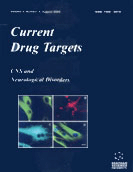Abstract
As the prevalence of tobacco use has decreased, it has become clear that individuals with mental illness comprise a substantial portion of the remaining smokers. Seventy to eighty percent of patients with schizophrenia smoke and their smoking is established before their first psychotic episodes or the initiation of treatment. Many patients with schizophrenia, and approximately 50% of their first degree relatives have abnormalities in auditory sensory gating and / or smooth pursuit eye movements. These abnormalities are corrected by nicotine, and they appear to be transmitted as autosomal dominant traits. Evidence is accumulating that these abnormalities reflect genetic variations in nicotine receptor number and function, that may increase susceptibility for schizophrenia. Recent studies suggest that bupropion, added to treatment with an atypical antipsychotic, can enhance the likelihood of smoking cessation or reduction in patients with schizophrenia. The prevalence of smoking is also substantially increased among patients with bipolar disorder, perhaps especially so among those with psychotic features. Nicotine delivered by gum or transdermal patch can provide short term relief for exacerbations of Tourettes Syndrome, but its use is limited by frequent toxicity, primarily nausea.
Keywords: Schizophrenia, Bipolar disorder, Tourettes syndrome, nicotinic receptors
Current Drug Targets - CNS & Neurological Disorders
Title: The Importance of Nicotinic Acetylcholine Receptors in Schizophrenia, Bipolar Disorder and Tourettes Syndrome
Volume: 1 Issue: 4
Author(s): Joseph P. McEvoy and Trina B. Allen
Affiliation:
Keywords: Schizophrenia, Bipolar disorder, Tourettes syndrome, nicotinic receptors
Abstract: As the prevalence of tobacco use has decreased, it has become clear that individuals with mental illness comprise a substantial portion of the remaining smokers. Seventy to eighty percent of patients with schizophrenia smoke and their smoking is established before their first psychotic episodes or the initiation of treatment. Many patients with schizophrenia, and approximately 50% of their first degree relatives have abnormalities in auditory sensory gating and / or smooth pursuit eye movements. These abnormalities are corrected by nicotine, and they appear to be transmitted as autosomal dominant traits. Evidence is accumulating that these abnormalities reflect genetic variations in nicotine receptor number and function, that may increase susceptibility for schizophrenia. Recent studies suggest that bupropion, added to treatment with an atypical antipsychotic, can enhance the likelihood of smoking cessation or reduction in patients with schizophrenia. The prevalence of smoking is also substantially increased among patients with bipolar disorder, perhaps especially so among those with psychotic features. Nicotine delivered by gum or transdermal patch can provide short term relief for exacerbations of Tourettes Syndrome, but its use is limited by frequent toxicity, primarily nausea.
Export Options
About this article
Cite this article as:
McEvoy P. Joseph and Allen B. Trina, The Importance of Nicotinic Acetylcholine Receptors in Schizophrenia, Bipolar Disorder and Tourettes Syndrome, Current Drug Targets - CNS & Neurological Disorders 2002; 1 (4) . https://dx.doi.org/10.2174/1568007023339210
| DOI https://dx.doi.org/10.2174/1568007023339210 |
Print ISSN 1568-007X |
| Publisher Name Bentham Science Publisher |
Online ISSN 1568-007X |
 3
3Related Articles
-
Hemoglobin Neurotoxicity is Attenuated by Inhibitors of the Protein Kinase CK2 Independent of Heme Oxygenase Activity
Current Neurovascular Research The Many Facets of Cell Injury: Angiogenesis to Autophagy
Current Neurovascular Research Treatment for Obsessive Compulsive Disorder
Current Psychiatry Reviews Approaches for the Development of Drugs for Treatment of Obesity and Metabolic Syndrome
Current Pharmaceutical Design Genetic and Environmental Modifiers of Alzheimers Disease Phenotypes in the Mouse
Current Alzheimer Research NF1, Neurofibromin and Gene Therapy: Prospects of Next-Generation Therapy
Current Gene Therapy Mechanisms of Colon Cancer Prevention with and Beyond COX-2 Inhibition
Current Topics in Medicinal Chemistry Melatonin in Autism Spectrum Disorders
Current Clinical Pharmacology FDA-approved Drugs Selected Using Virtual Screening Bind Specifically to G-quadruplex DNA
Current Pharmaceutical Design Combining Diffusion-Weighted Imaging Patterns with ABCD2 Score Predicts Stroke Risk after Transient Ischemic Attack
Current Neurovascular Research Matrix Metalloproteinases as Potential Targets in the Venous Dilation Associated with Varicose Veins
Current Drug Targets A Role for the Complement System in Rheumatoid Arthritis
Current Pharmaceutical Design Cytotoxic T Lymphocyte Antigen 4 Gene +49 A/G (rs231775) Polymorphism and Susceptibility to Systemic Lupus Erythematosus
Current Rheumatology Reviews Pattern of Primary Vasculitis with Peripheral Ischemic Manifestations: Report of a Case Series and Role of Vascular Surgery
Current Rheumatology Reviews Editorial [Hot topic: Psychotropic Drugs in Child and Adolescent Psychiatry - a New Era on the Horizon (Executive Editors: Aribert Rothenberger, Manfred Gerlach and Ralf W. Dittmann)]
Current Pharmaceutical Design Good at Heart: Preserving Cardiac Metabolism during aging
Current Diabetes Reviews Maternal Choline Supplementation: A Potential Prenatal Treatment for Down Syndrome and Alzheimer’s Disease
Current Alzheimer Research Anti-Endothelial Cell Antibodies in Patients with Cerebral Small Vessel Disease
Current Neurovascular Research Stem Cell and Gene Therapeutic Strategies for the Treatment of Multiple Sclerosis
Current Molecular Medicine Risk Factors for Suicide – An Alternative View
CNS & Neurological Disorders - Drug Targets


















